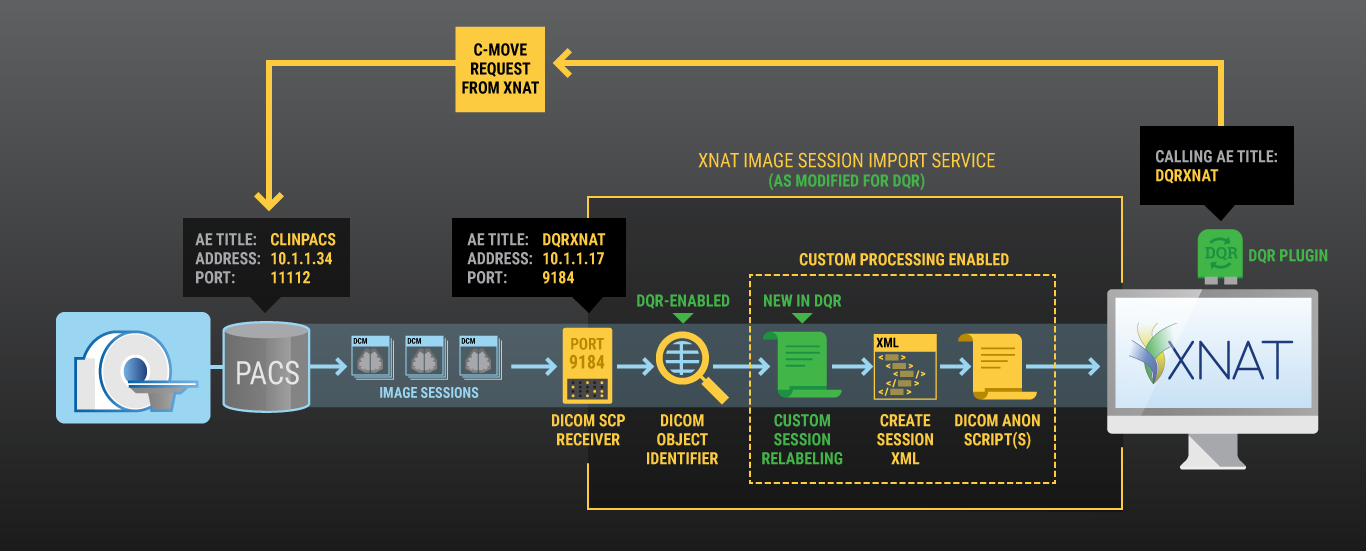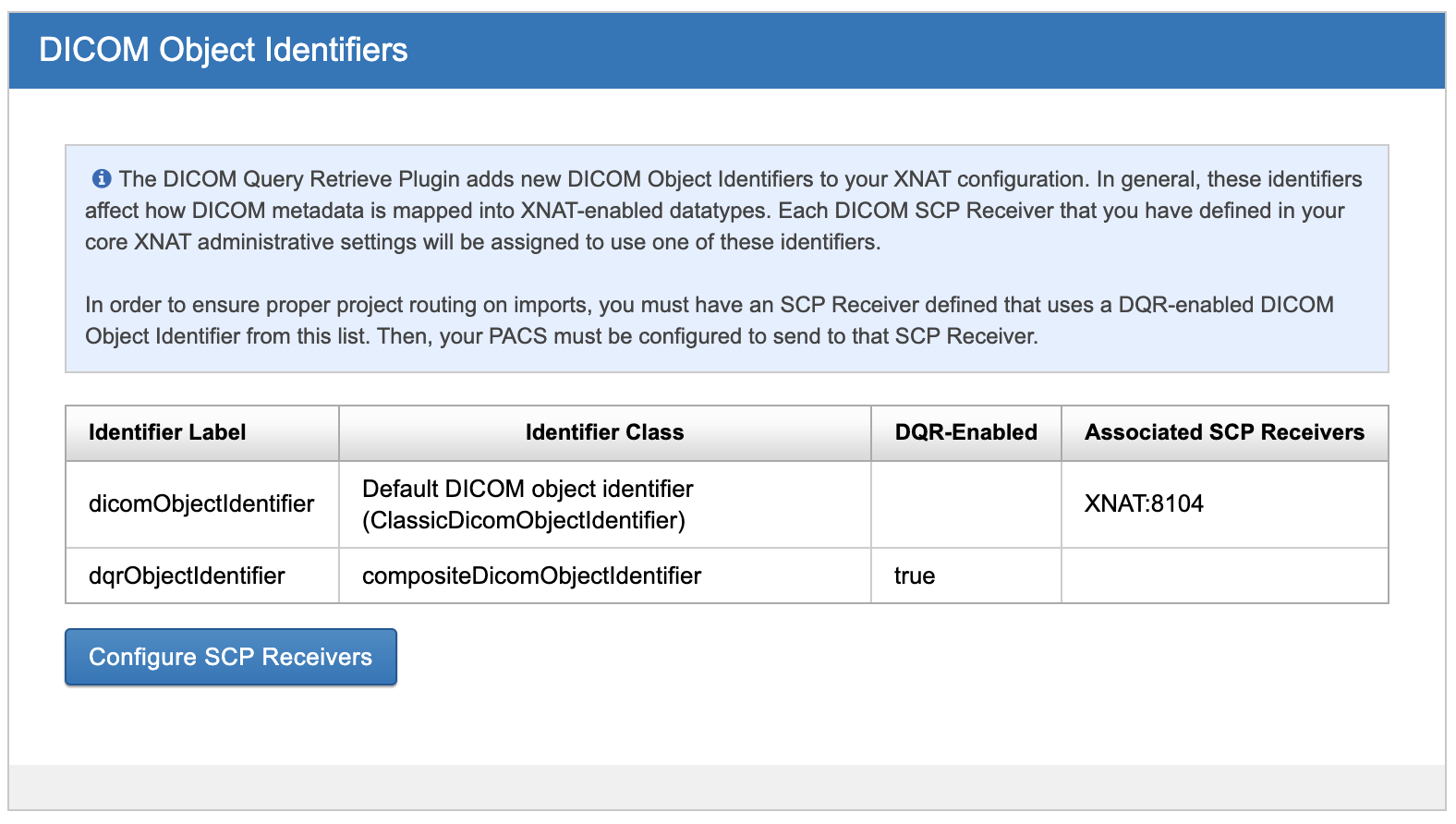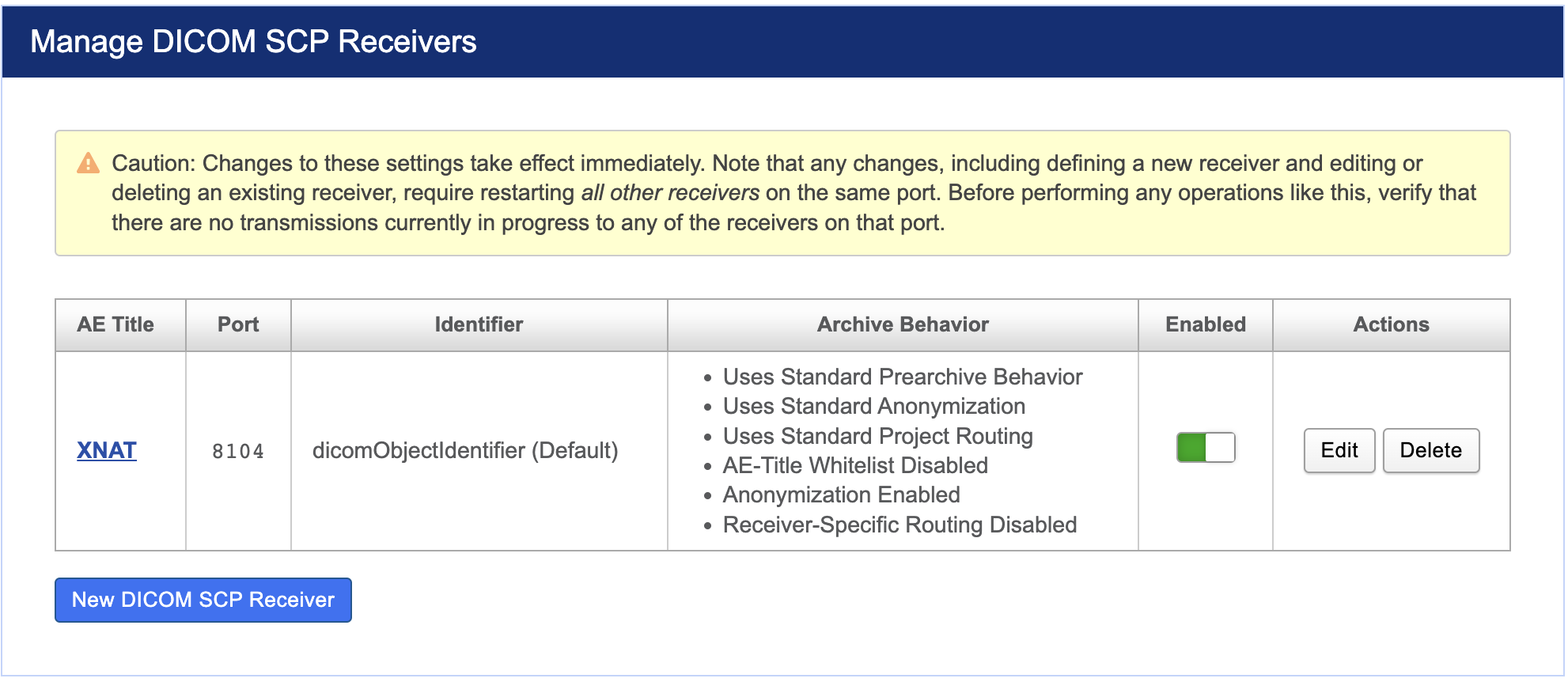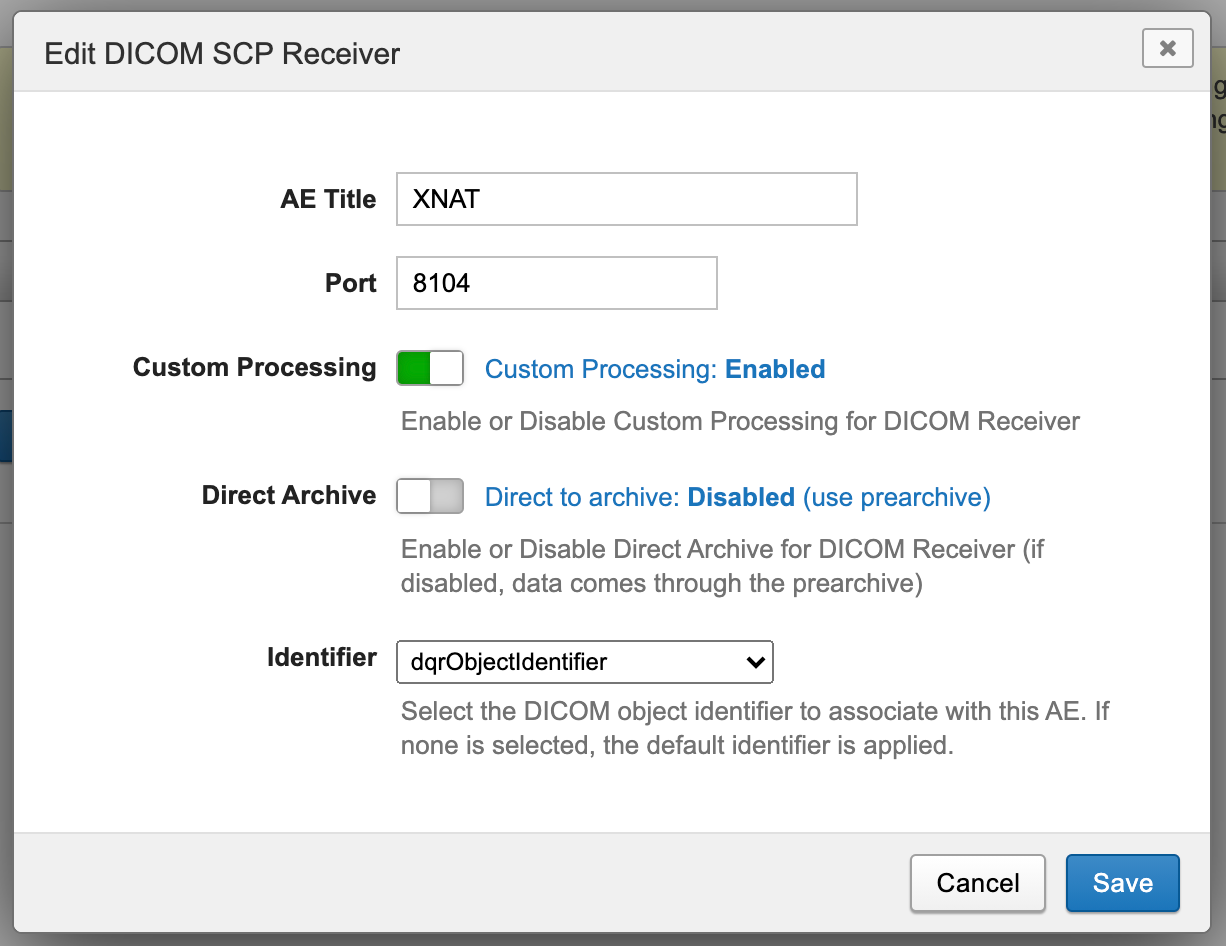DQR Admin: Assigning a DQR-enabled SCP Receiver
In order to receive data requested by the DICOM Query-Retrieve interface, your XNAT's image session import process must be properly configured. This means configuring a DICOM SCP Receiver that can correctly handle incoming requests from DQR and route them to the appropriate destination.
For many XNAT administrators, this will require dealing with "DICOM Object Identifiers" for the first time.
What is a DICOM Object Identifier?
The DICOM Object Identifier is a part of XNAT's core image session import and archive process. However, it has not surfaced in the XNAT Admin UI until now, because the DQR Plugin requires a custom-defined DICOM Object Identifier in order to function properly. Here's how these identifiers fit into a DQR-enabled session import workflow, starting with a C-MOVE request being received by the PACS. (Note the connection between the DICOM SCP Receiver and the DICOM Object Identifier)

When XNAT receives a DICOM image session file, it uses a set of identifier objects to determine to which project the newly received DICOM file belongs, and to assign subject and session labels within that project. This functionality is critical when receiving files sent from a PACS terminal, as those terminals have no XNAT interface to select a destination project or relabel subjects or sessions.
There is a default DICOM Object Identifier in XNAT, named "dicomObjectIdentifier", which makes multiple passes through the DICOM data to map its parameters to XNAT objects as described here: How XNAT Scans DICOM to Map to Project/Subject/Session. The DQR plugin adds a new DICOM Object Identifier, named "dqrObjectIdentifier". This is set up to coordinate with the DQR workflow, which involves a user in XNAT making a C-MOVE request for DICOM session files, and pre-assigning a project and new labels for the subject and session.
Here's how the dqrObjectIdentifier handles these field assignments:
| XNAT Project | Ignores DICOM values. Project is assigned based on the user's active project when performing the DQR import request. |
|---|---|
| Subject Label | The subject label is set to the value of the DICOM Patient's Name field (0010,0010), or else is left blank. |
| Session Label | The session label is set to the value of DICOM Study ID field (0020,0010), or else is left blank. |
Associating SCP Receivers with DICOM Object Identifiers
The DQR Plugin Settings Admin UI has a table listing all installed DICOM Object identifiers. This is for reference only. There is no configuration required here, but you will need to add or edit your XNAT's DICOM SCP Receivers to use one of the "DQR-enabled" DICOM Object Identifiers.

Developer Note
Identifiers designed to work with DQR, including the relabeling feature, should have been assigned a name that contains the String "dqr", which lets XNAT know that the identifier should work with DQR (custom DICOM Object Identifers can be written and included in plugins and any ones designed to work with DQR should include "dqr" in their name).
To associate a DICOM SCP Receiver with your newly-installed identifier, click on the "Configure SCP Receivers" button to navigate to the the appropriate panel in the core XNAT Admin UI. By default, your XNAT will only have one SCP Receiver, and this panel will look like this:

You can either edit the existing SCP Receiver to use the DQR-enabled Object Identifier, or create a new one. We recommend creating a new one, to avoid affecting any existing DICOM import behavior that uses the default receiver.
Enable An Existing Receiver: Click on the highlighted AE Title in the table, and you will see an edit dialog open up.

Set Up A New DQR-Enabled Receiver: Click the "New DICOM SCP Receiver" button. You'll see an empty version of the above dialog.
For either scenario, fill in your settings as needed:
| AE Title | This is the identity that your PACS will look for, when receiving any C-FIND, C-MOVE, or C-STORE requests. Each SCP Receiver in your XNAT system should have a unique AE Title. |
|---|---|
| Port | This refers to the network port for allowed transfers. Ask your PACS Network Administrator if you do not know what value to use. |
| Custom Processing | Set this to Enabled. This enables Custom Image Import Processors, which can be used to fine-tune how and when anonymization is applied, and this enables DQR relabeling for subjects and sessions. |
| Direct Archive | (Introduced in XNAT 1.8.3). This allows incoming sessions to skip the prearchive and be routed directly into your project archive for a mild system performance benefit. This setting does not affect DQR performance. |
| Identifier | Select an identifier labeled with "dqr" |
Click "Save" to finalize your changes.